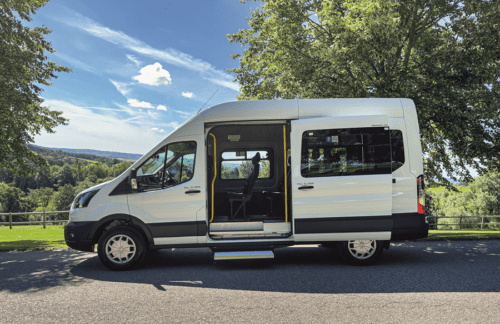
New DfT proposals could allow category B licence holders to drive heavier zero-emission vehicles
In response to a consultation on driving licence flexibility for alternatively fuelled vehicles, the Department for Transport (DfT) recently announced plans for a number of policy adjustments to encourage the take-up of larger zero-emission vehicles (ZEVs), including minibuses. The proposed changes aim to address challenges around the uptake of ZEVs, including the impact the heavier nature of ZEVs (due to the weight of their batteries) has on the weight restrictions of category B licences.
The Community Transport Association (CTA) says it welcomes the proposed changes, many of which align with what it has already called for. They include enabling category B licence holders to drive ZEVs up to a MAM of 5 tonnes, removing the requirement for category B drivers to have an additional five-hour training for large ZEVs, and increasing the towing allowance of ZEVs to align with petrol and diesel vehicles.
Currently, a volunteer driver with a category B licence is restricted to driving vehicles with a Maximum Authorised Mass (MAM) of 3,500kg or 4,250kg when accessible. Due to their heavier nature, the CTA points out that many ZEV minibuses exceed this MAM, meaning a category B licence volunteer driver cannot drive them, making it much harder for many organisations to shift to emission-free vehicles.
The DfT proposal includes an adjustment of the category B licence weight restrictions to enable drivers to drive a ZEV with a MAM of up to 5,000kg, which would mean that volunteer drivers with only a category B licence would be eligible to drive a wider range of ZEVs. The adjustment to 5,000kg will only apply however to vehicles that would have a MAM of 3,500kg or less without the heavier zero-emission powertrain, and all other restrictions for category B licence holders driving these vehicles, such as not being able to be paid to drive, will still apply.
With regard to towing allowance of ZEVs, these would be brought into line with petrol and diesel vehicles. Current Category B licence holders that passed their test after 1 January 1997 are not allowed to tow when driving a vehicle between 3,500 and 4,250kg. However, through the proposed changes, DfT will allow category B licence holders operating ZEVs within that range to operate a vehicle and trailer combination of up to a MAM of 7,000 kg, though with the conditions that the ZEVs must still not exceed 4,250kg and that the change will apply only to category B licence holders who are eligible to drive a 7,000kg MAM vehicle trailer combination without the extra powertrain weight in line with recent changes to B+E entitlements.

